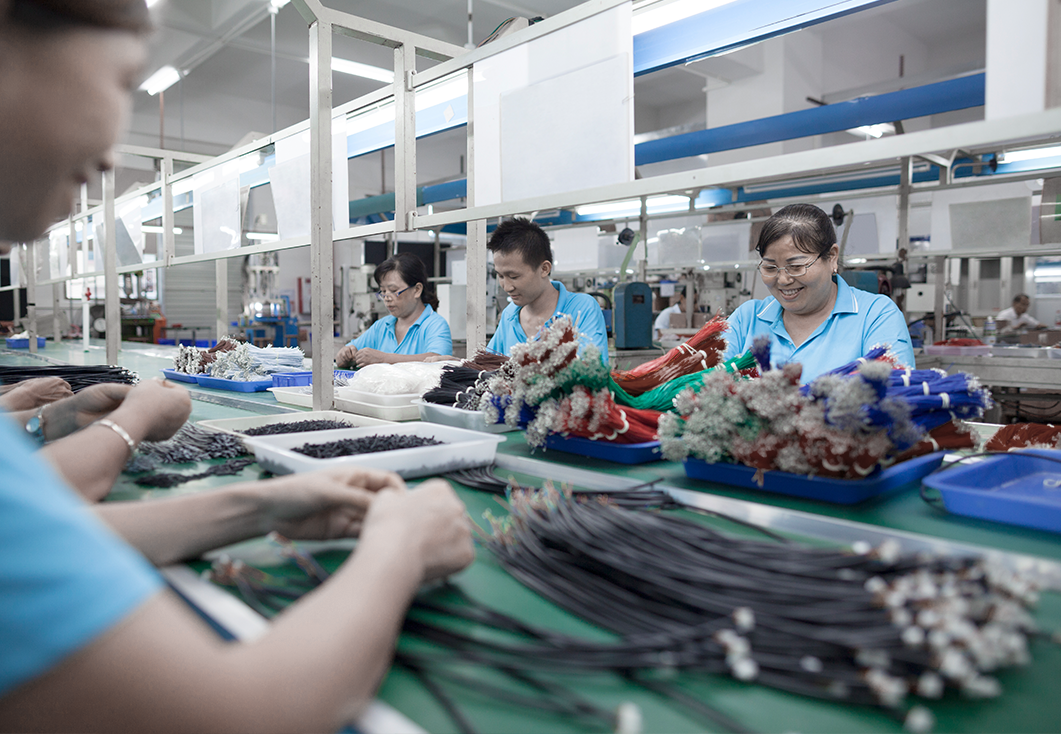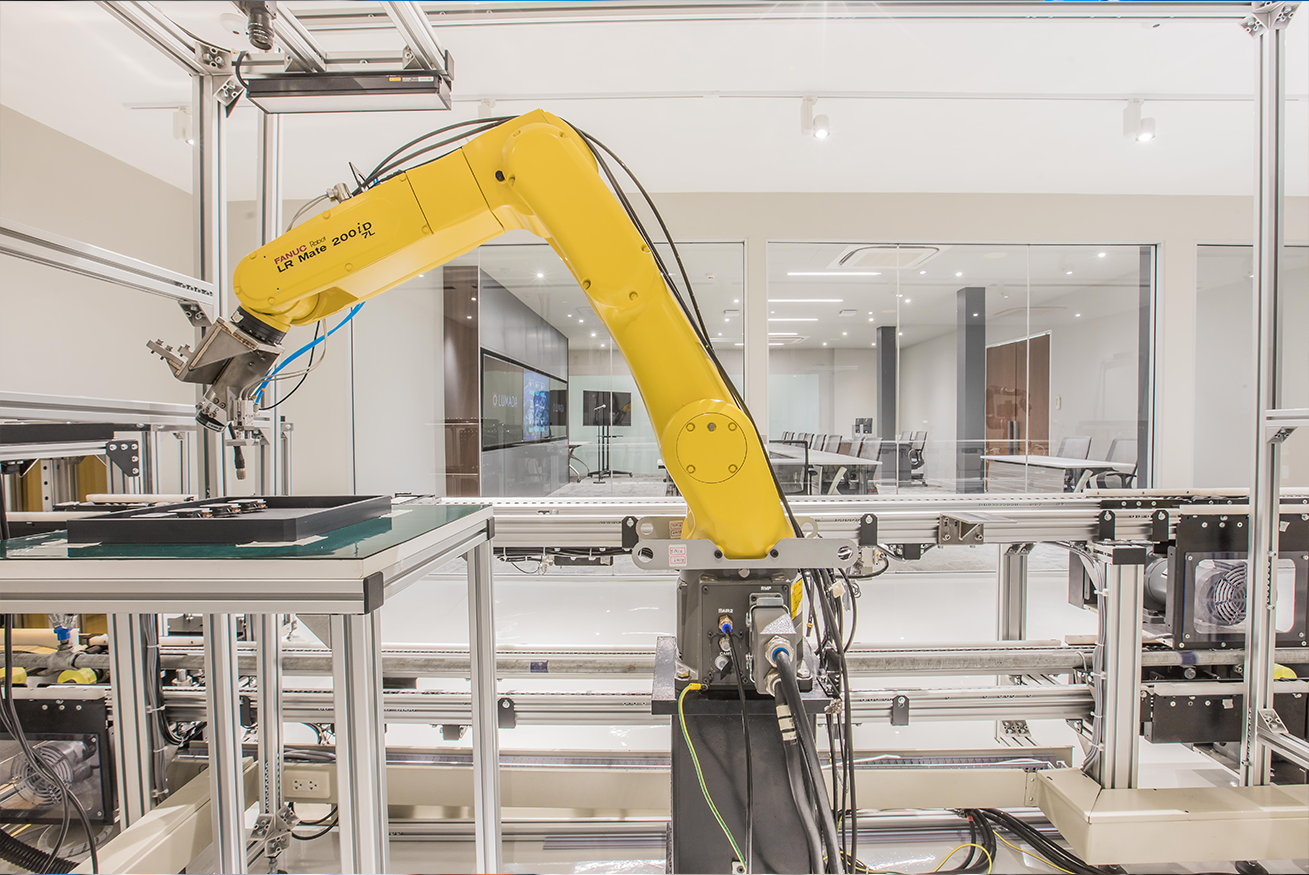Smart Manufacturing:
Panacea to ASEAN’s labour problems
Manufacturing is key to ASEAN’s past, present and future. As a core growth driver, manufacturing contributed about US$670 billion, or 21% to the region’s GDP in 2018.i
2019 saw a boost to the region’s prospects by tense US-China trade relations, as manufacturers shifted their plants away from China into Southeast Asia. Senior global executives are now more inclined than before to diversify supply chains from China to other Asian countries and ASEAN is well-placed to attract new investmentsii:
Thailand has plans to establish itself as an electric vehicle hub in five years
Malaysia has built up 4.3 gigawatts of solar-cell-module manufacturing capacity - third-largest outside of China
Vietnam has become a destination for electronics manufacturing
Not even COVID-19 has managed to put a dent in the sector’s prospects. While not immune to the effects of the pandemic, observers now believe it has accelerating the adoption of Industry 4.0 technologies and helped to usher in a new era of smart manufacturing in the region.iii
Industry 4.0 refers to the transformation of industry through interconnectivity, automation, machine learning, and real-time data.iv Sometimes referred to as smart manufacturing, it marries production and operations with digital technology, machine learning, and big data to create a connected ecosystem for manufacturing companies. According to McKinsey, ASEAN could capture productivity gains worth US$216 billion to US$627 billion by moving up the Industry 4.0 technology ladder.v This critical step of scaling the Industry 4.0 ladder however, places significant burdens on the ASEAN workforce.
Reliance on manual processes is turning off workers
When it comes to manufacturing, ASEAN used to compete on low wages. This has led to a lesser focus on improving productivity and adopting new technologies. ASEAN’s current pace of technological adoption lags behind China, which has invested heavily in automation and robots in the past 10 years. Chinese productivity has grown by 84% in the same time period, compared with 38% on average for ASEAN.vi
COVID-19 has also affected the region by causing problems in supply chains and production processes. A lack of visibility designed into their supply chains have affected manufacturers in the region. Manufacturers who relied heavily on manual processes in their operations were most affected.vii Reliance on manual processes comes at the expense of reduced quality and higher costs, while lower levels of production efficiency results in difficulties adjusting to changes in demand.
Watch this short film to see the importance of remote management and how it will vastly improve you and your fellow colleagues' quality of life.

As mentioned earlier, ASEAN is attracting more and more investments in the manufacturing sector. This growth of manufacturing activities will place escalating levels of stress on the workers, should employers persist with current levels of low productivity and manual processes. Unable to cope with the new workload, skilled workers who can bring their expertise to a new job, will be the first to leave. Younger workers are also likely to resign, resulting in a labour crunch. And this issue will be further exacerbated by a declining workforce in ASEAN.

Ageing populations in ASEAN will shrink its manufacturing workforce
According to the World Economic Forum, the working-age population worldwide will see a 10% decrease by 2060.viii ASEAN is no stranger to this trend, as it is home to some of the most rapidly ageing countries. The population of Singapore over the age of 65 is expected to reach 26.6% in 2035. Malaysia would become an ageing society by 2030 when 15% of its population will be 60 and above. Vietnam has 11.3 million seniors, with 1.8 million over 80 and this number will reach 20% by 2038.ix
This demographic trend will have a significant impact on the manufacturing sector. Take Thailand for example. By 2031, Thailand will move to become an ‘aged society’, where more than 20% of the population is over 60 years old—the largest share of senior citizens in ASEAN. This is further complicated by declining birth rates, where there are fewer science graduates and younger generations shun manufacturing work.x
The trend will bring about changes on the supply side as labour, an important input in manufacturing, agriculture and services, becomes scarcer. It will become much harder for manufacturers to hire much needed help.
How Hitachi can help
Having worked closely with manufacturers, Hitachi understands that talking about smart factories and data analytics can sound intimidating at first. To help, we adopt a co-creation philosophy, where we work hand-in-hand with manufacturers as partners, helping them to climb the Industry 4.0 ladder. With our custom-made solutions, our clients can move away from manual processes and help to ease the burdens on their workers.
Through artificial intelligence and machine learning, our solutions can help manufacturers gather real-time data from individual components to create more targeted maintenance schedules.
Manufacturers can use these data to avoid unnecessary maintenance and pre-empt problems associated with unplanned downtime. This will in turn, lower costs, increase reliability and raise profits for our clients.
The positive effects will also reverberate down the production line and raise morale for the frontline workers. They can finally move away from manual work to using data and automated technology in their daily production process. This will shorten their work hours, reduce repetition and raise their value-add to the company’s manufacturing output. This in turn, will keep the ASEAN manufacturing industry chugging along smoothly and resolve the workforce shortage issue.
Besides that, Hitachi is also offering two specific solutions for our clients to meet today’s challenges.
They are remote management and Lumada:

Remote management
As COVID-19 spreads, remote work is becoming part of the "new normal." This change has spread into the manufacturing industry, where remote work is now a part of production front lines. Coined as Smart Factory as a Service or SFAAS, this new technology has enabled the remote management of factories anywhere in the world.
SFAAS enables companies to grasp the internal workings of their factories through cameras, RFIDs and various sensors installed at the work site. Managers and technicians can stay on top of these data, shared via cloud, at in their parent factories in real time.
Our remote management solution enables our clients to share factory infrastructure and avoid excessive capital investments. This is especially valuable for small and medium-sized enterprises, making it possible to minimise resource commitments and increase their risk competitiveness.

Lumada platform
With a firm belief in the ASEAN’s manufacturing future, Hitachi has taken the first step to set up Lumada Centre in Thailand in 2018. Lumada is an IoT platform that allows you and Hitachi to co-create customized digital solutions to suit your business needs. It offers access to Hitachi’s advanced technologies through the analysis of your data, which is then used to add value to your business operations through the implementation of big data analytics and artificial intelligence.
Serving as a digital services hub, Lumada aims to equip Southeast Asian companies with IoT capabilities, big data analytics as they move up the Industry 4.0 ladder.
Source:
i https://www.es.kearney.com/operations-performance-transformation/article?/a/accelerating-4ir-in-asean-an-action-plan-for-manufacturers
ii https://via.news/asia/five-trends-propel-aseans-growth-post-corona/
iii https://www.iaasiaonline.com/asean-manufacturers-feel-the-impact-of-covid-19-2/
iv https://www.epicor.com/en-sg/resource-center/articles/what-is-industry-4-0/
v https://www.mckinsey.com/~/media/mckinsey/business%20functions/operations/our%20insights/industry%204%200%20reinvigorating%20asean%20manufacturing%20for%20the%20future/industry-4-0-reinvigorating-asean-manufacturing-for-the-future.ashx
vi https://www.bain.com/contentassets/37a730c1f0494b7b8dac3002fde0a900/report_advancing_towards_asean_digital_integration.pdf
vii https://www.iaasiaonline.com/hitachi-vantara-expands-digital-manufacturing-portfolio-as-pandemic-exposes-industrys-need-to-modernise-operations/
viii https://www.weforum.org/agenda/2020/02/ageing-global-population/
ix https://www.nst.com.my/world/region/2019/12/548599/ageing-population-test-asean-govts
x https://www.krungsrisecurities.com/images.aspx?filename=http://www.krungsrisecurities.com/uploads/2020/01/research_en_US_10484_1_IO_Industry_Outlook_2020_2022_EN_EX.pdf
Date of Release: January 2021



